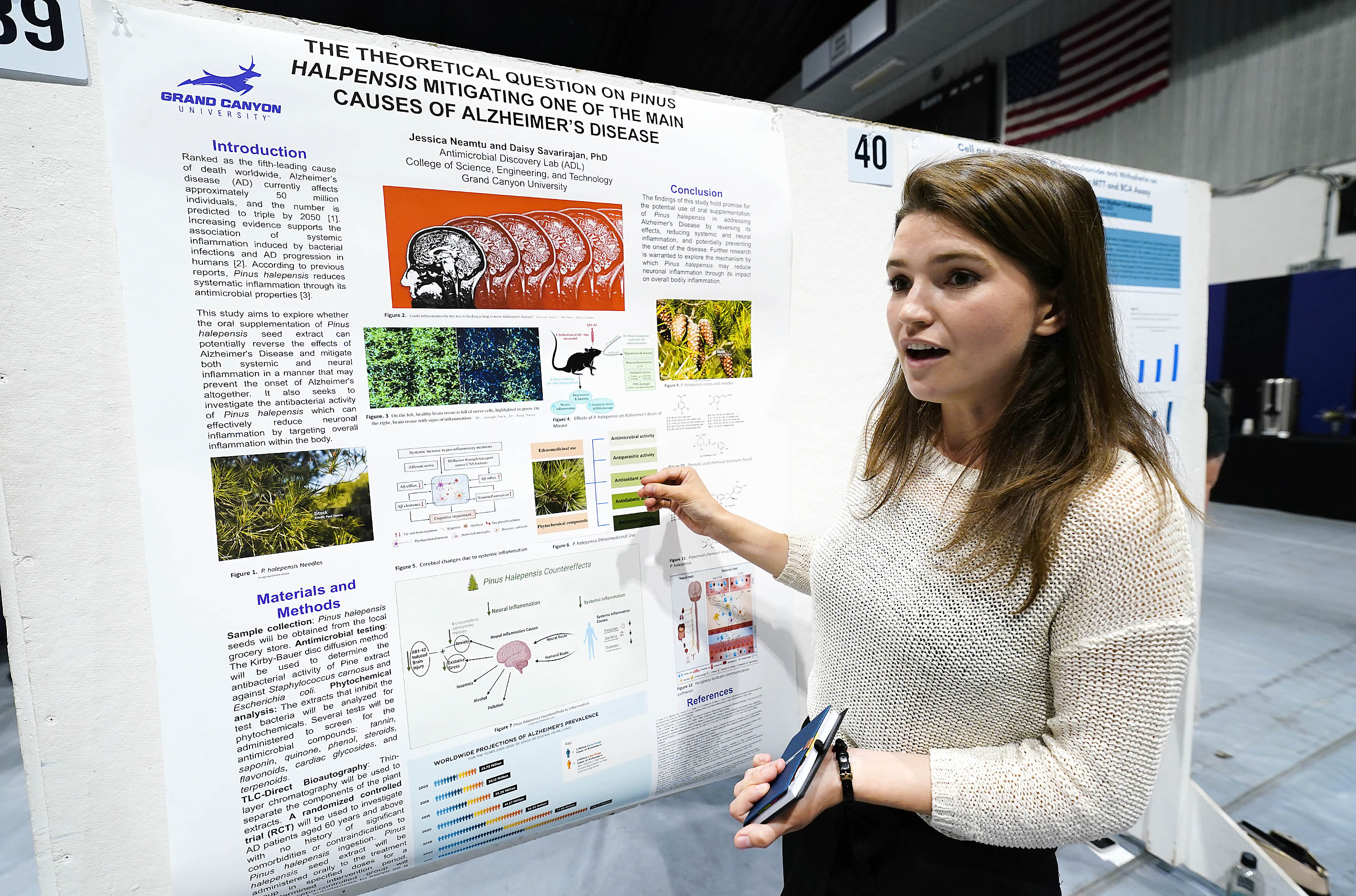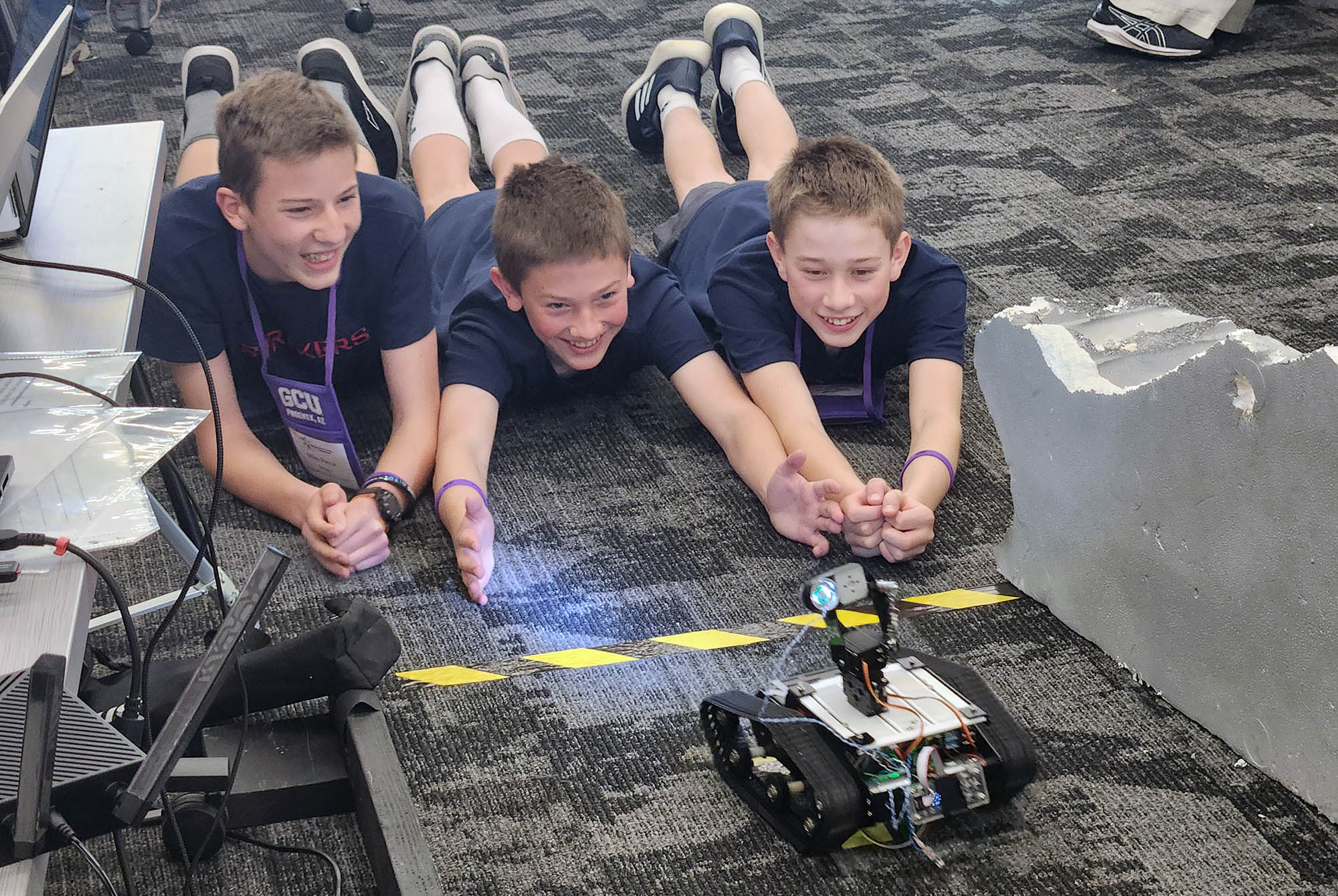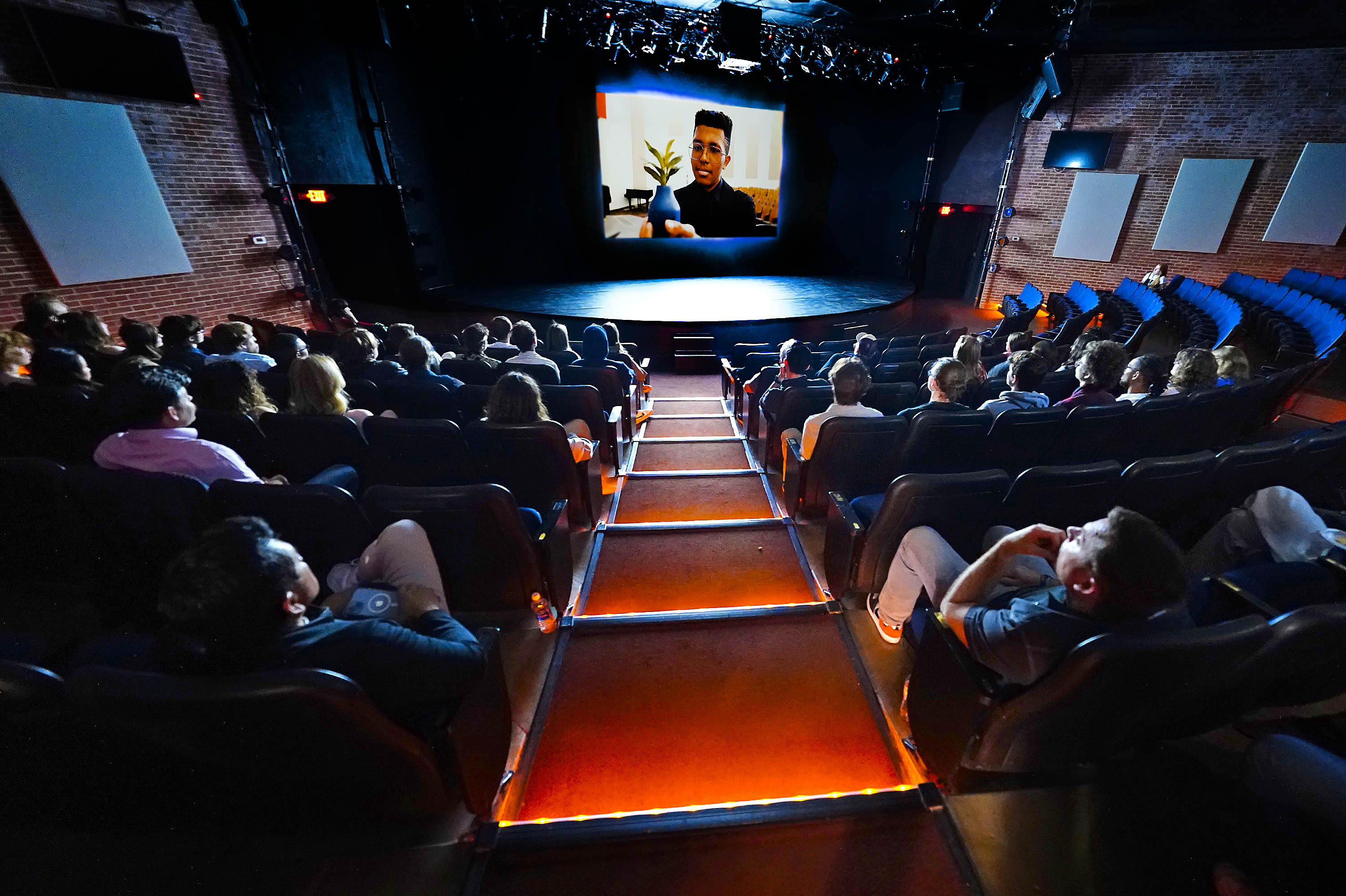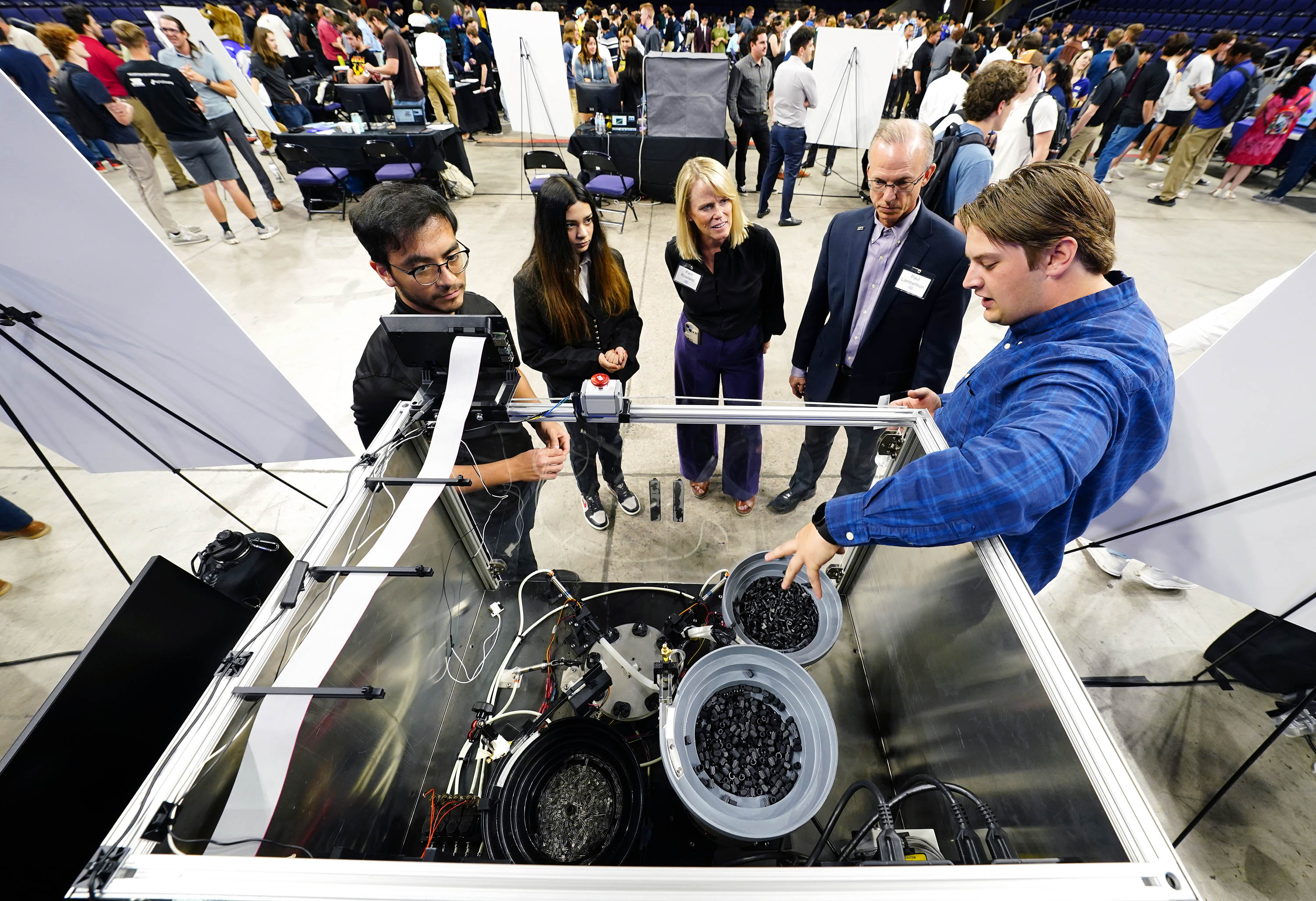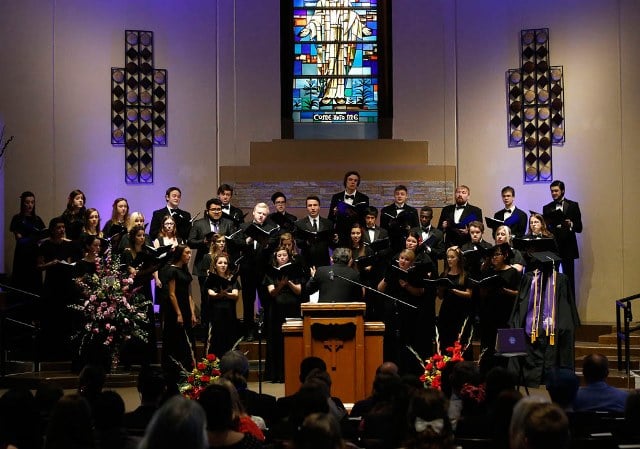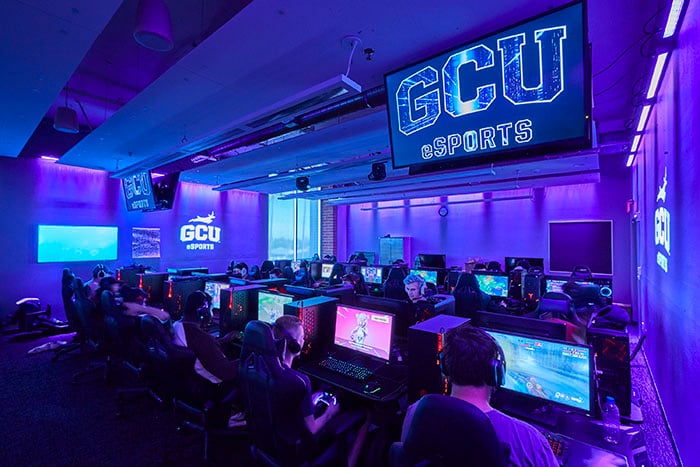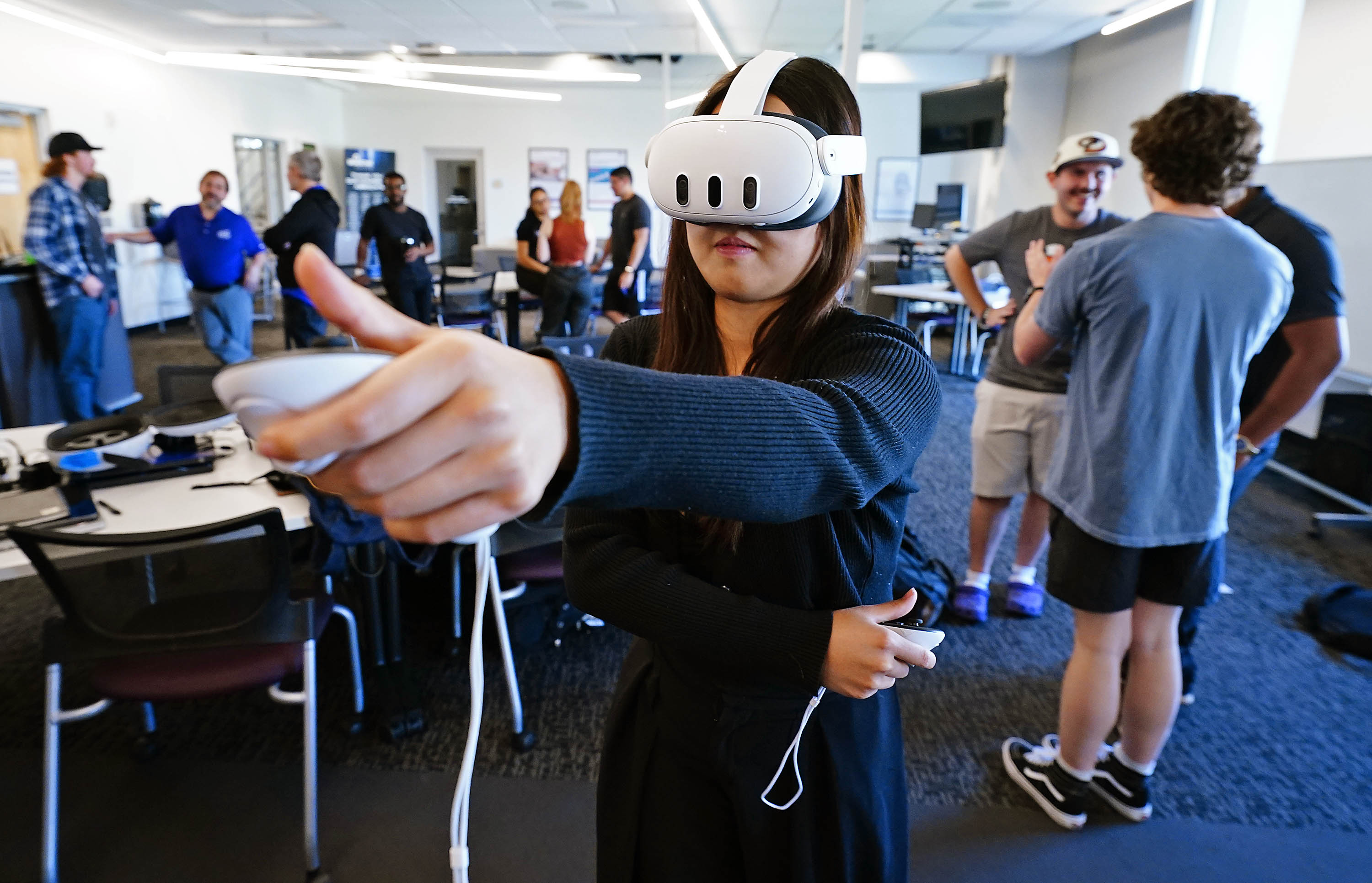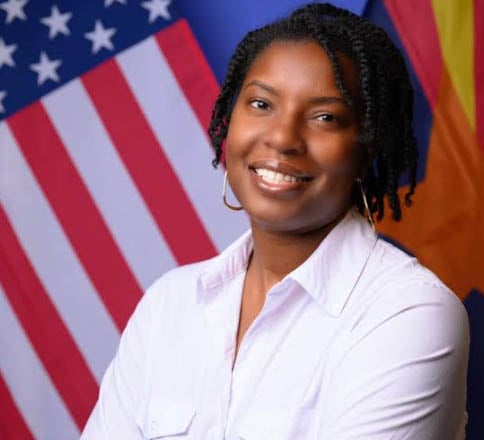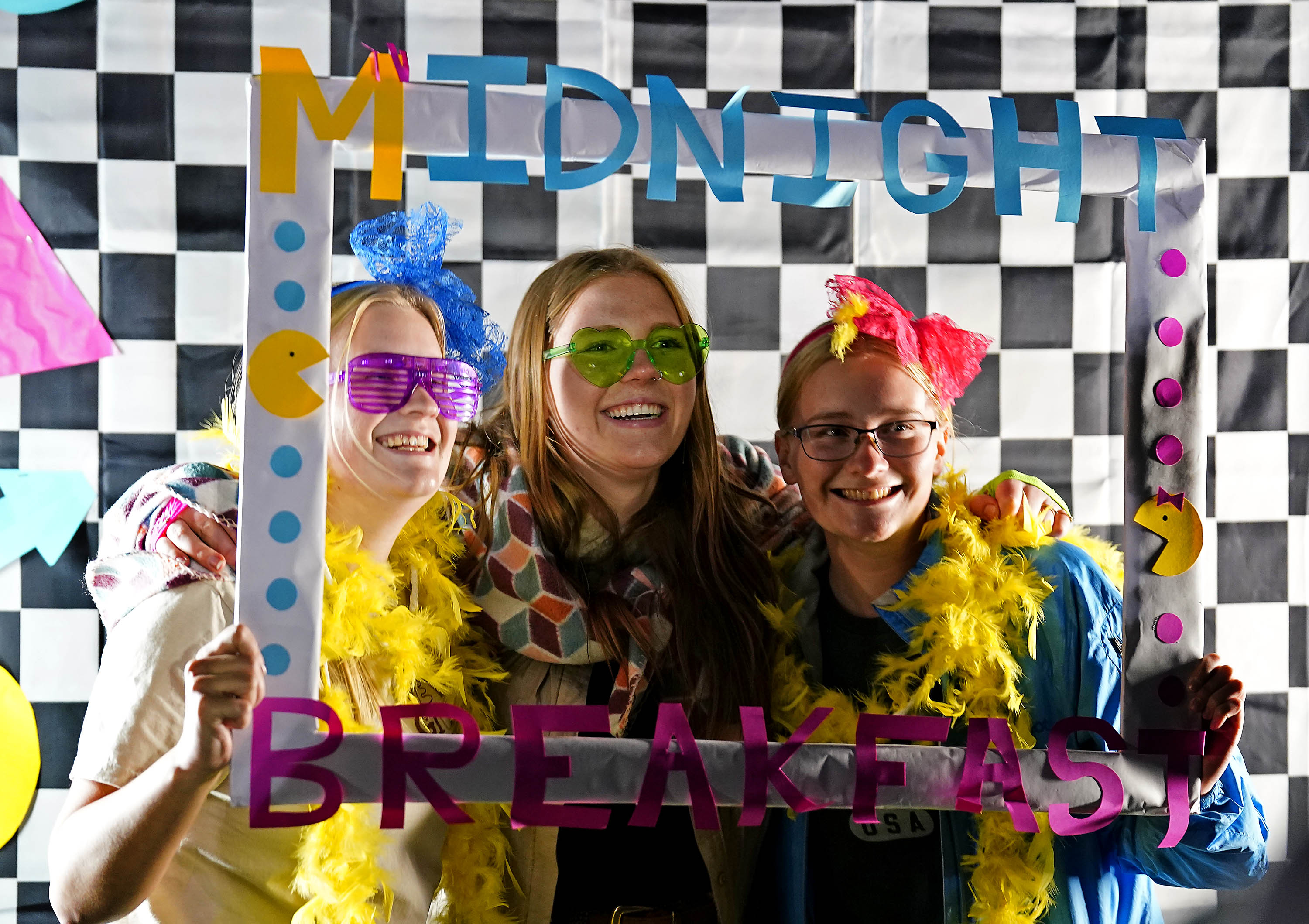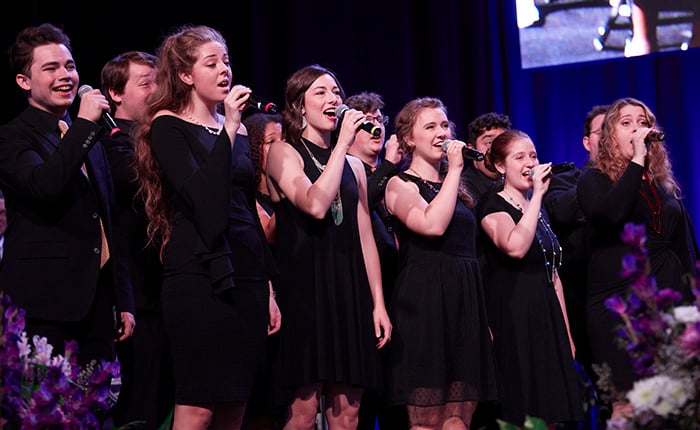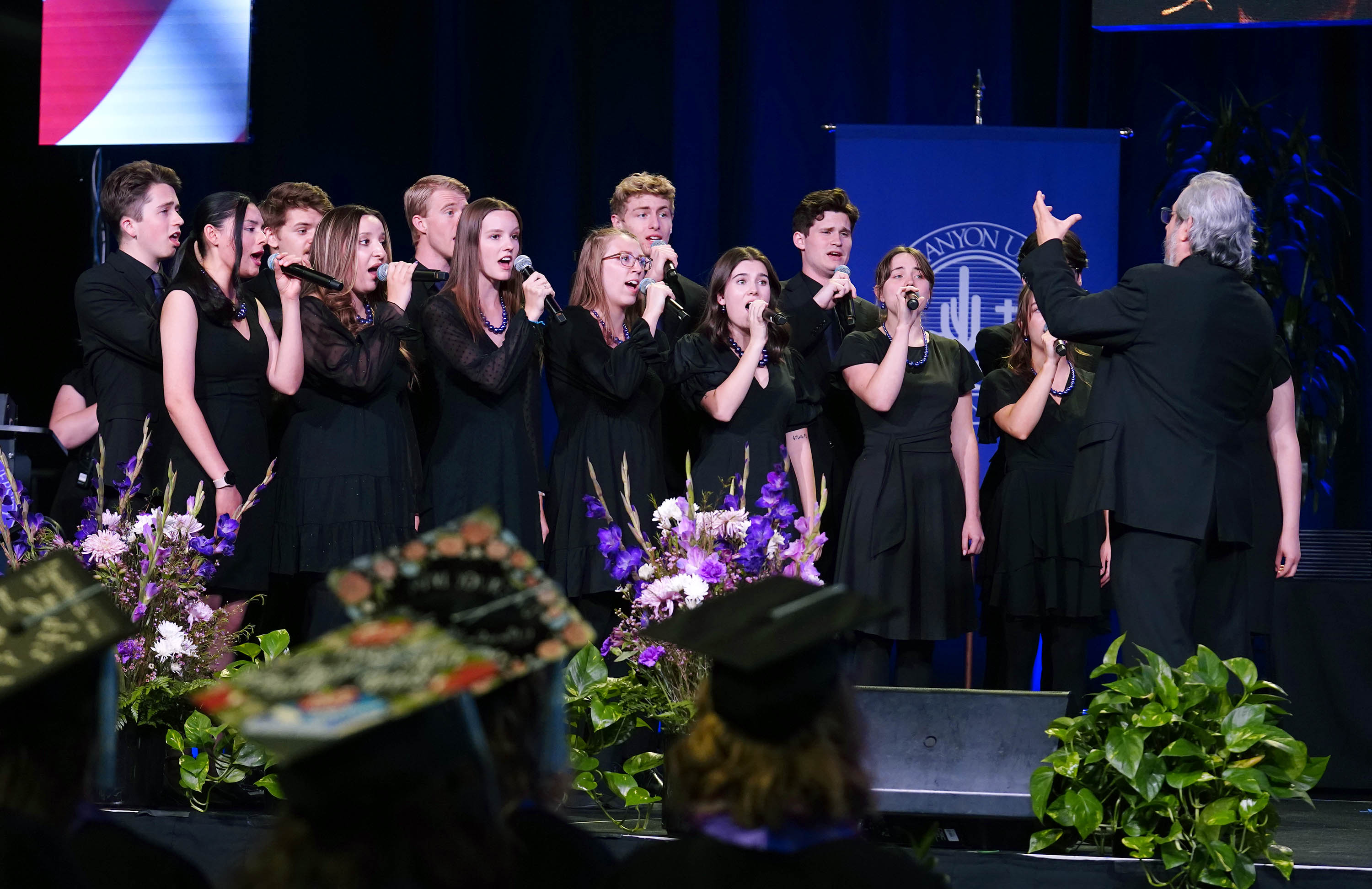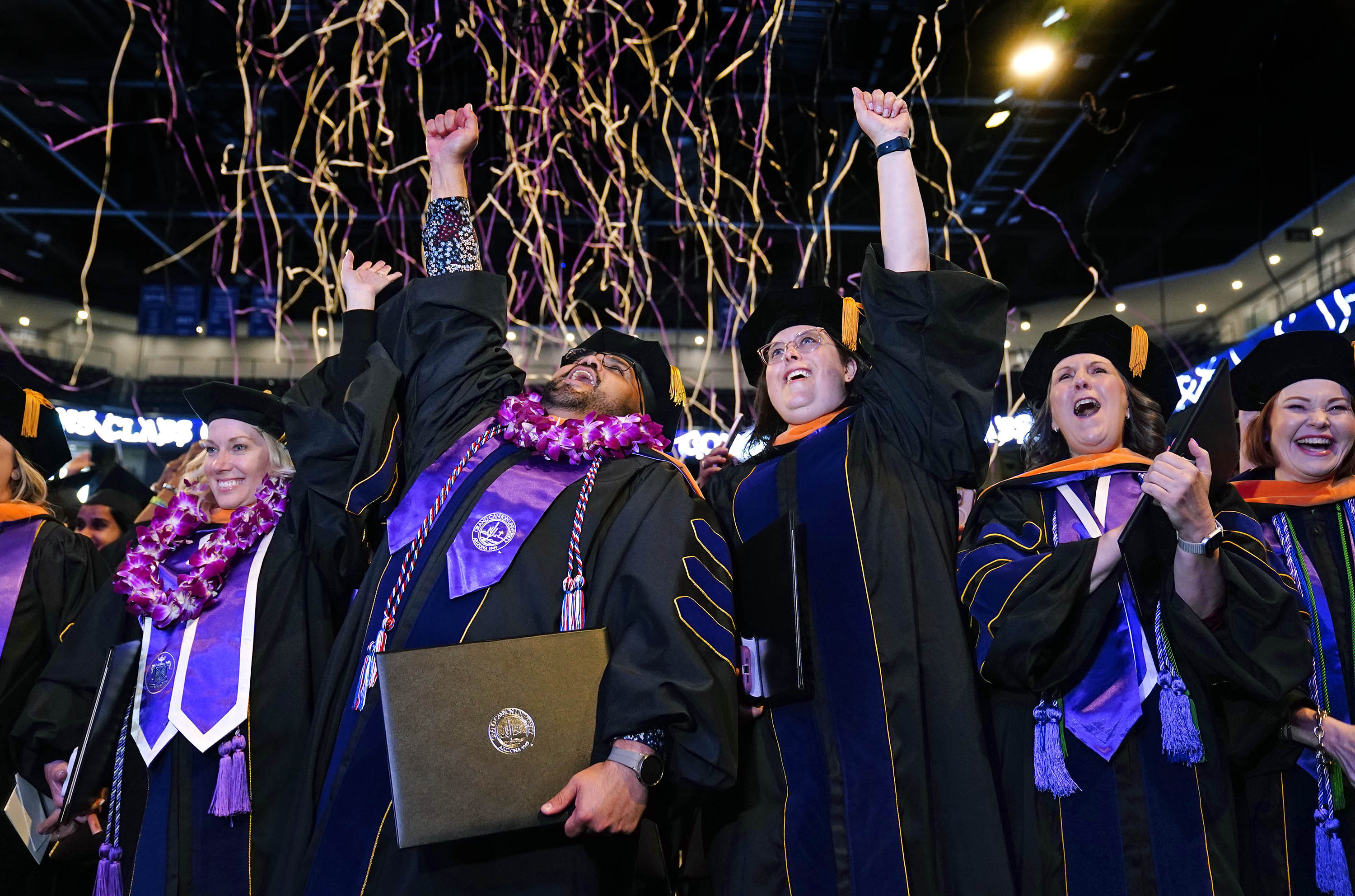
By Lana Sweeten-Shults
GCU News Bureau
“I need 2 liters of blood … STAT!!!!” the doctor commanded as an ambulance siren wailed urgently in the background, the chatter in the emergency room buzzed, the heart rate monitor beep-beep-beeped, and the health care workers darted here and there.

Joshua Darden’s own heart started to sprint as he drowned out the white noise, let his nursing training kick in and focused on the task at hand: to help the patient entrusted to him.
Then the computer-generated emergency scenario ended and Darden, who is graduating this week from Grand Canyon University with his nursing degree, leaned back from the monitor and keyboard for a class break.
In a world without COVID-19, the aspiring emergency room nurse would be spending his days in class on the GCU campus or in the simulated hospital floor in the College of Nursing and Health Care Professions. He also would be shadowing nurses at a teaching hospital or other health care facility as part of his clinical rotations.
Instead, he’s sheltering at home in California and finishing his studies online, including immersing himself in virtually simulated clinicals – the next best thing, he said, to actually being at a hospital or clinic and learning from real-world nurses.
“I think it’s the coolest thing ever,” Darden said of the NurseThink vClinical online simulations. “It’s like you’re in an ER. You’re triaging patients and placing them with nurses, and you’re doing all these different aspects. You have pictures of the patients and the nurses. There’s a background picture of an ER setting, too, and there are ER noises playing throughout the simulation.”
Then there are the pop-ups – virtual call-lights of sorts -- that appear on the computer screen that might say, “’A patient is complaining of this, what do you do?’ You have to stop what you’re doing to deal with that,” Darden said.
Something the College of Nursing and Health Care Professions had to deal with was how to move its program – one heavily weighted toward hands-on training – to a virtual environment.
How do nursing students train when they can’t shadow a real nurse at a real hospital because they’re sheltering at home? How can they learn what they need to learn when they don’t have access to the GCU immersive simulation lab, the floor in the college made to look like a real-life hospital floor?
Virtual clinical simulations, such as the emergency room scenarios Darden delved into, would be one piece of the puzzle, along with archived video recordings from previous semesters of students honing their critical thinking skills in the nursing simulation lab, and online escape room activities.
While the faculty has used simulation lab videos before to train students, the virtual clinical simulations and escape room activities are all new efforts, said Heather Ziemianski, the college’s Director of Clinical Operations and Site Development.
“We needed something that we could use in a virtual setting where we could still test clinical judgment and application,” she said.

Like Darden, Level 3 nursing student Mishayla Kortman, who is doing her online classes from home in the Phoenix area, said the virtual clinicals have been her favorite part of the distance-learning conversion.
“We even gave them (virtual patients) their medications. It’s very much like a real-life simulation. Obviously, it’s NOT clinicals, but I feel like it’s the most like clinicals they could have possibly gotten; I definitely learned a lot from it.”
It was important for the nursing faculty to replicate those clinicals as closely as possible, Ziemianski said, down to the structure of a nursing student’s day.
Students spent six hours on the computer per virtual clinical simulation, generally from 7 a.m. to 1 p.m. Each hour online counts as two hours of clinicals, so the six-hour virtual sessions would fulfill 12 hours of clinical instruction.
GCU clinical instructor Alisa Kurth said she “would never want to do away with clinicals” but pointed out how some of her students told her they learned more from the virtual clinical simulations than actual clinicals at a local hospital. They felt the experience was more condensed since they saw back-to-back patients in the virtual setting and received a lot more information in a shorter amount of time.
“You never know what you’re going to get in a clinical setting,” said Kurth, who added that there may some idle time when a student shadows a nurse and perhaps there aren't back-to-back patients to care for on a given day.
Beyond the virtually simulated clinicals, the college ramped up the number of nursing simulation lab training videos it made available to students for distance learning. Those videos served as the college’s immersive simulation component.
“That way, they would get to see peers running through them (the scenarios). It was still lifelike, it was still the GCU process -- the GCU way that we run things,” Ziemianski said.
Faculty set up daylong class meetings on the Zoom online conference platform to watch and discuss those videos. Instructors broke up the meetings with preconference, midday and post-conference check-ins with their students, along with debriefings. It’s a way for the instructors to touch base with their students, see how they’re doing and answer any questions, the same as they would if the students were in clinical or the simulation lab.
Students also spent part of their day online going through faculty-developed case studies they discussed during check-ins and post-conference activities.
Maintaining that structure in a nursing student’s day was important, Ziemianski said.
“We have to make sure that we’re meeting our standards for CCNE (Commission on Collegiate Nursing Education) accreditation,” she said. “We did make sure that for every activity, there was some kind of deliverable that the student needed to submit so we could track participation and engagement, just like we would for the clinical setting. So everything that we put in there is very purposeful, and then we made sure everything tied back to our course objectives so students were getting what they needed.”
Not that there wasn’t room for a little fun.

Faculty included escape room activities, such as one called “Escape the Hemorrhage,” related to an obstetrics experience. The activities present scenarios in which students need to answer questions to move to the next virtual “room” in the activity.
“It was another way to test knowledge-based content,” Ziemianski said.
One other resource Darden loves is an online review for the National Council Licensure Examination, the grueling standardized test all students must take before they can practice as a nurse professionally.
On campus, students usually complete a mandatory three-day review as a final preparation for the test.
“It’s a big thing for all of us,” he said.
While he and his classmates won’t be able to go over the material in person with their instructors this year, the online NCLEX review is just one more resource that will help them remain successful in their college pursuits, even from home.
Kortman added, “For the situation that we’re in, I definitely feel like the GCU Nursing Program has definitely done their best to give us the most experience and learning that we can have.”
As for Ziemianski, she sees this positive outcome from these changes prompted by the coronavirus:
“Even though this has turned my clinical world upside down, I’m excited to see what happens with this virtual simulation,” she said, adding how virtual clinicals won’t replace actual clinical time in a health care facility but may augment what nursing schools are doing now. “I’m excited to see where this goes.”
GCU senior writer Lana Sweeten-Shults can be reached at lana.sweeten-shults@gcu.edu or at 602-639-7901.
Related content:
GCU Today: Actors set the scene for GCU nursing students
GCU Today: Strong exam scores a shot in the arm for GCU nursing
GCU Today: Students help bridge transition for prenursing majors


